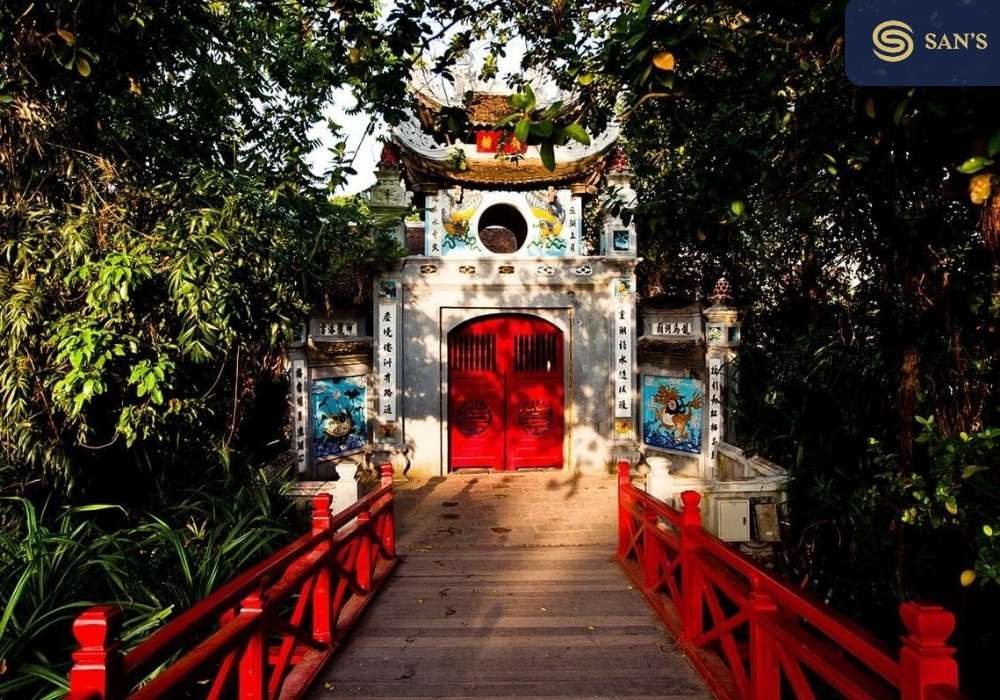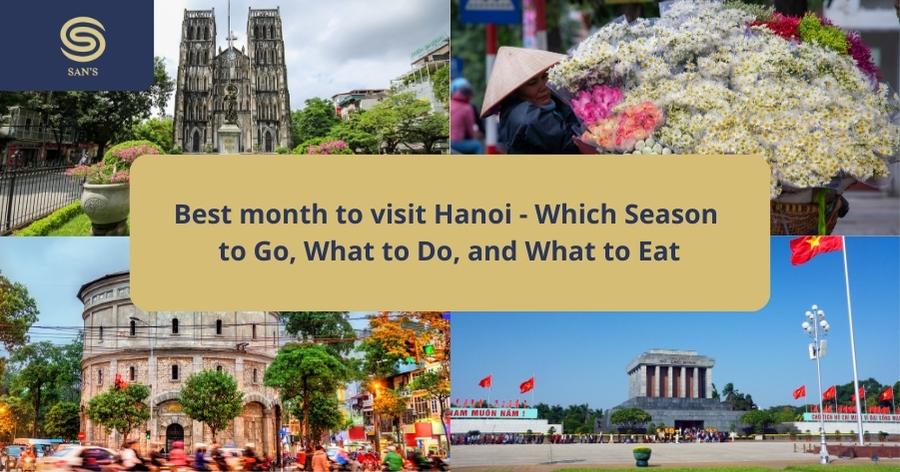Nestled in the heart of Hanoi, atop the serene waters of Hoan Kiem Lake, stands the revered Ngoc Son Temple – a testament to Vietnam’s rich tapestry of history and tradition. This ancient structure is not just a marvel of architectural brilliance; it’s a symbol, encapsulating centuries of stories, legends, and the cultural ethos of the Vietnamese people.
In today’s bustling world, where skyscrapers dwarf age-old monuments and technology often overshadows tradition, Ngoc Son Temple remains an emblem of resilience, reminding both locals and visitors of the timeless values and narratives that have shaped the nation. As we embark on this journey, we’ll delve into the temple’s intricate past, its significance, and explore why, even in the modern age, Ngoc Son Temple continues to resonate and hold a special place in the hearts of many.
Historical Background of Ngoc Son Temple
Long before Hanoi’s streets echoed with the hum of motorbikes and the chatters of its bustling markets, the land held tales of legends and spirituality. The Ngoc Son Temple, translating to the Temple of the Jade Mountain, is a shining beacon of this age-old history. Founded in the 14th century, its inception is intertwined with stories of valiant heroes and divine interventions.
Initially dedicated to the spirit of the site, General Tran Hung Dao, who heroically fought against the Yuan Dynasty, and La To, the patron saint of physicians, were later venerated here, making the temple a convergence point for both martial and scholarly traditions.

The temple has borne witness to numerous pivotal moments in Vietnamese history. Notably, in the 19th century, it underwent significant renovations under the patronage of Nguyen Van Sieu, a fervent Confucian scholar. It was during this period that the iconic The Huc Bridge leading to the temple and the pen-shaped tower, a symbol of the scholar’s virtues, were added to the complex.
Over the years, the temple has not just remained a place of worship but has actively participated in the ebbs and flows of the nation’s history, from resisting foreign invasions to nurturing scholarly pursuits. Today, each stone and altar in Ngoc Son Temple carries with it a piece of Vietnam’s rich past, silently narrating tales of bygone eras.
Architectural Marvel
Standing majestically on Jade Island in the center of Hoan Kiem Lake, Ngoc Son Temple is not just a spiritual sanctuary but also an embodiment of Vietnamese architectural genius. From its gracefully curving roofs adorned with dragon carvings to its intricate wooden lattice work, the temple exemplifies traditional design elements that have long characterized Vietnamese temples and pagodas.
The entrance of the temple itself, guarded by the ornate Morning Sunlight Bridge (The Huc Bridge), sets the stage for the architectural splendors within. This iconic red-painted wooden bridge, consisting of multiple arches, is a fine representation of the delicate balance Vietnamese architecture achieves between man-made structures and nature.

Upon crossing the bridge, visitors are greeted by the Pen Tower (Thap But) – a stone pillar soaring into the sky, engraved with words that glorify the scenic beauty of the place and the temple’s significance. This tower, reminiscent of the scholar’s brush, symbolizes the pursuit of knowledge, a recurring theme in the temple’s architecture.
Inside, the main hall of Ngoc Son Temple showcases a harmonious blend of wood and masonry, with elaborate carvings depicting tales from Vietnamese folklore and Confucian literature. The altar setups, with their intricacies, bear the marks of craftsmanship handed down through generations.
What’s truly fascinating about Ngoc Son’s architectural approach is its harmony with the environment. Traditional techniques ensured the temple did not dominate its surroundings but rather complemented them. The use of local materials, from the wood sourced from nearby forests to the stones chiseled from regional quarries, made certain that the temple remains a natural extension of the landscape.
Travel Tips for Visiting Ngoc Son Temple
- Best Time of Year to Visit
- Weather Considerations: Hanoi experiences a tropical monsoon climate. The ideal times to visit are during the autumn (from September to November) and the spring (from March to April) when the weather is milder and the skies clearer.
- Festive Occasions: Try to visit during the Lunar New Year (Tet) when the temple is alive with rituals, ceremonies, and festive decorations. Although it can be more crowded, the atmosphere is electric and offers a unique cultural experience.
- Nearby Attractions
- Hoan Kiem Lake: A stroll around this serene lake offers a peaceful respite from Hanoi’s bustle. The lake lights up beautifully at night and serves as a communal space for locals practicing Tai Chi, aerobics, or simply enjoying a morning jog.
- Hanoi Old Quarter: Located not far from Ngoc Son Temple, the Old Quarter is a maze of historic charm, bustling streets, colonial architecture, and local markets. Dive into the myriad of shops, cafes, and street food stalls to get a taste of local life.
- Thang Long Water Puppet Theatre: Experience Vietnam’s traditional art form, where puppeteers use rods under the water to animate the puppets, narrating folklore tales and legends.
- Respectful Practices to Observe
- Dress Appropriately: As with many temples across Asia, visitors should wear modest attire. Avoid sleeveless tops, short skirts, and shorts. If needed, carry a scarf or a shawl to drape over your shoulders.
- Maintain Silence: While it’s tempting to chat and discuss the temple’s marvels, remember it’s a place of worship. Keep conversations low and avoid loud noises.
- Follow Signage: Some areas of the temple might be restricted to visitors or might have specific rules. Always respect such guidelines.
- Photography: While photography is generally permitted, always look out for signs indicating otherwise. Also, avoid using flash, especially inside the temple, as it can be disruptive.
- Show Respect during Ceremonies: If you happen upon a ceremony or ritual taking place, stand aside and observe quietly. Avoid interrupting or walking through congregations.
Ngoc Son Temple, poised elegantly on the serene Hoan Kiem Lake, is much more than a mere architectural marvel or a historical monument. It is a tapestry woven with threads of Vietnam’s rich history, culture, myths, and spiritual beliefs. From the ancient tales of emperors and divine swords to the persistent resonance of traditional rituals amidst the cacophony of modern life, the temple stands as a silent guardian of Vietnam’s vibrant soul.

Historically, it has borne witness to the ebb and flow of dynasties, resisted invaders, and celebrated heroes. Culturally, it’s a repository of rituals, traditions, and stories passed down through generations, offering visitors a window into the Vietnamese ethos.
In the modern era, amidst the skyscrapers and digital screens, Ngoc Son Temple is a poignant reminder of the timelessness of values, beliefs, and the human spirit’s enduring quest for meaning.
As we draw this exploration to a close, it’s worth remembering that words and images can only capture so much. The true essence of Ngoc Son Temple, with its myriad tales, tranquil ambience, and profound significance, is best experienced firsthand.

So, to every reader, here’s an invitation – step into the world of Ngoc Son Temple, walk its ancient corridors, breathe in its stories, and let it etch an indelible mark on your traveler’s soul. The temple awaits, timeless and welcoming.
FAQs about Ngoc Son Temple
- Where is Ngoc Son Temple located?
- The temple is located on Jade Island in Hoan Kiem Lake, in the heart of Hanoi, Vietnam.
- How old is Ngoc Son Temple?
- The temple was founded in the 14th century, making it several centuries old.
- Is there an entrance fee to visit the temple?
- Yes, there’s a modest entrance fee for visitors. It’s always good to check current rates before visiting.
- What are the temple’s operating hours?
- Typically, the temple is open from 8:00 AM to 5:00 PM daily, but hours may vary during special events or holidays.
- Why is it called the Temple of the Jade Mountain?
- The temple’s name, “Ngoc Son,” translates to “Jade Mountain.” It’s named for its location on Jade Island in the center of Hoan Kiem Lake.
- Can I take photos inside the temple?
- Photography is generally permitted, but it’s always respectful to look for signs or ask temple staff. Flash photography, especially inside, is usually discouraged.
- What should I wear when visiting Ngoc Son Temple?
- Visitors should wear modest clothing. It’s advisable to avoid sleeveless tops, short skirts, and shorts. Carrying a scarf or shawl might be helpful.
- What’s the significance of the turtles in the temple?
- The turtle is a central figure in the legend of Emperor Le Loi and the magical sword. Turtles are revered as symbols of longevity and strength in Vietnamese culture.
- Is the temple accessible for visitors with disabilities?
- While the temple is on an island and involves some steps, efforts have been made to make it more accessible. However, it’s good to inquire in advance for specific needs.
- Are there guided tours available for the temple?
-
- Yes, there are often guided tours available, both through local agencies and at the temple itself. These tours offer a deep dive into the temple’s history, architecture, and cultural significance.
Here is the “Ngoc Son Temple: A Timeless Beacon of Vietnam’s Heritage”. Wishing you a delightful trip to Vietnam! If you’re visiting Vietnam and the capital, Hanoi, you can book a room at San Hotel at the best prices here!
Update the latest travel and accommodation information in Hanoi at our fan page: https://www.facebook.com/sanhotelhanoi





